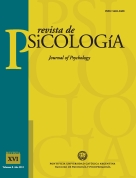Auditory - perceptual assessment of degraded voices and its correlation with acoustic measures
Keywords:
Voice disorders, Acoustic voice analysis, GRBAS, Perceptual voice analysisAbstract
The goal is to determine using acoustic measurements, which information is the most relevant to listeners at the time of categorizing the overall degree of dysphonia. Eight voice signals were chosen (4 female voices and 4 male voices). Each voice was perceptually evaluated through the item G of GRBAS scale by 10 experienced listeners and acoustically by aperiodicity, noise and chaos measures. The statistical study by discriminant analysis shows the importance of GNE, Jit and Lyapunov Jitter_cc as parameters and predictors of overall degree of dysphonia. The application of the k-means evidence there are features in the acoustic parameters that allow us to objectively group the voices studied with 100% accuracy for class 0,96% for class 2 and 79% for class 3. A greater number and variability of cases are need to verify those preliminary results.
Downloads
Downloads
Published
How to Cite
Issue
Section
License















